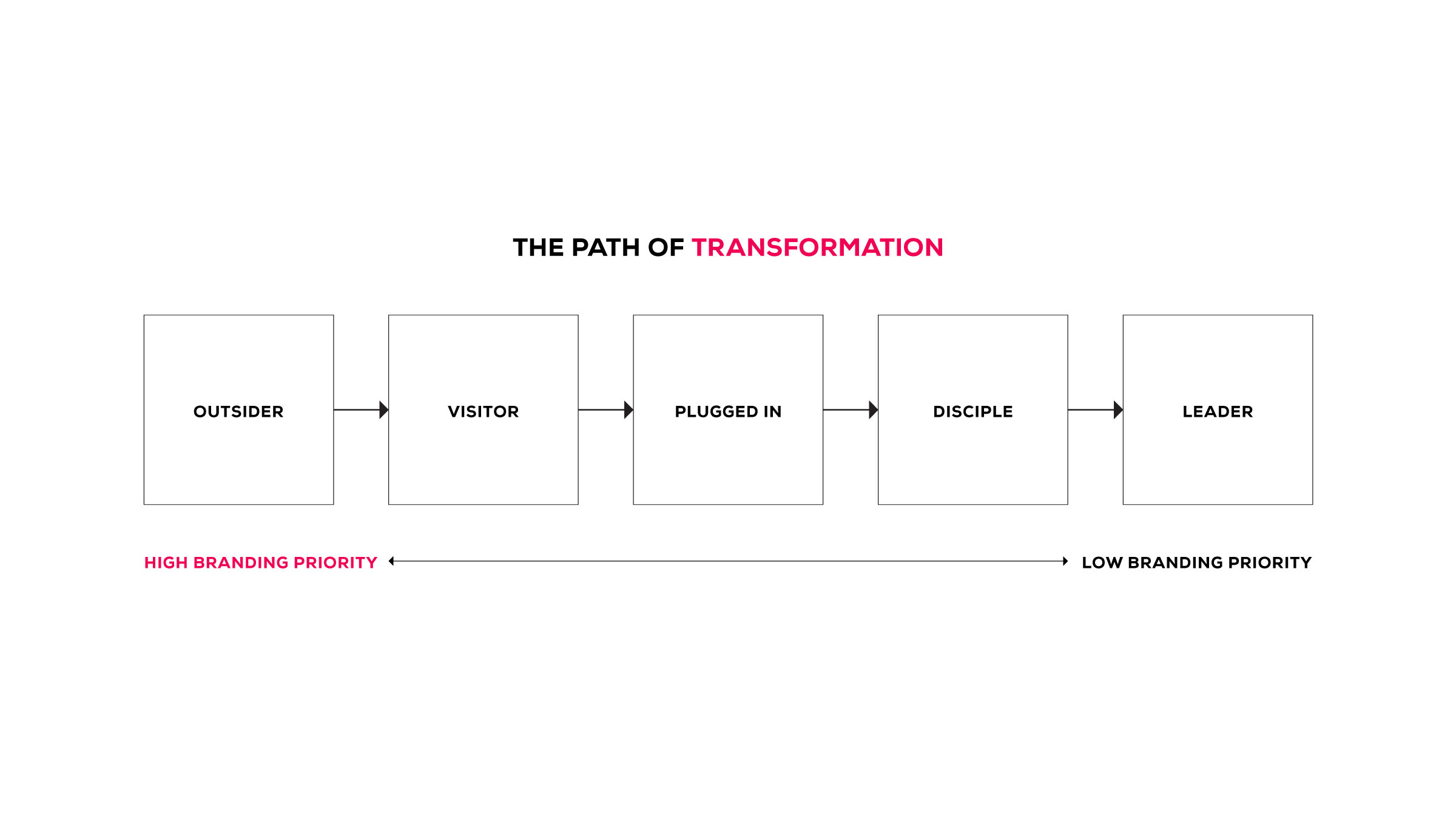“The Path of Transformation”
Outsider>> Visitor>> Plugged in>> Disciple>> Leader
God has his own ideas for how to shepherd people along this path. We’ll do well not to hold onto some form of fist-clenched control. However, let’s remember that the laborers are few in the harvest, and there is work to be done—work which God wants to accomplish through us. So, a little strategy can go a long way.
Looking at each phase of the journey of transformation shown above, let’s ask ourselves, which of the phases comprise people who already know, like, and trust us? Who knows us most intimately?
The answer is obvious, yes? The further to the left someone is on the path, the less they know about us. Outsiders and newcomers are the most skeptical about who we are and what we’re up to. For this reason, we need to take care to make the best first impressions. To hide our faults? No. It’s not about us. To sugarcoat the truth? Absolutely not.
Here’s what I mean:
Ugly Mug Pics
I send ugly pictures to the people who are closest to me. Sometimes I’ll do this for someone’s birthday, and sometimes for no reason. I make sure my face takes up the entire picture space. It may be a Jim Carrey grin—something that really stretches my features. You can see my pores. Maybe my nose hairs. Sometimes I even scrunch my chin and take the photo from a low angle, so that skin rolls are the most prominent feature of the photo.
Surprise! I don’t fill my Instagram feed with ugly mug pics. I reserve such gems for the people who already know me closely. I save them for the people who have already accepted me, flaws and all. I make these friends uncomfortable because we already love each other. They won’t get the wrong idea from my strangeness. It’s a weird form of trust and intimacy.
My Instagram feed has a little more polish, but it’s still the real me. Or you could say, it’s the best of me. Now, of course, I could take that too far, and try to make my followers think my life is perfectly under control, and I have no problems. But in general, I post “my authentic best-self” on Instagram, struggles included.
Consider the Bruised Chest
I know a pastor who came into a church to serve under the lead pastor. One day the lead pastor twisted the new pastor’s nipple. It was aggressive enough to produce a bruise that the new pastor’s wife later noticed and inquired about. All in good fun. These two pastors are still great friends. But you could imagine what it might be like if the same lead pastor decided to use this expression of good-hearted intimacy to all new visitors to the church.
My point?
Communicate differently with the outsiders than you do with your close leadership circle on the inside.
On the path of transformation, the people who are outsiders need you to help them overcome the “fear of the unknown” for them. Maybe they like Jesus but aren’t sure about the church. Maybe they’re full of questions about both. They need a sneak peak of what life is like on the inside. They need to see “the authentic best self” of your church.
Not only that, but they need to see that you care about what you’re saying to them. They need to see that this message is worth their time. They have a strong sense of what is authentic versus fake, and a keen eye for what’s excellent versus haphazard. They need to know that “the good news” really is good, and that maybe this “church thing” is a little different from what they used to think.
If your ministry style leans more saints-centric, you might think that my mindset is too evangelism-focused. You might be thinking, “If we focus on believers first, the evangelism will take care of itself.” Hold on, now. Not so fast. I’m only suggesting that the outsiders and not-yet-believers are the ones who need their perspectives changed the most. Branding is one way you can help them see the kingdom with new eyes. It’s one way you can generate just enough intrigue to invite them to take a second look at Jesus.
Times New Roman
Now transport yourself back to that group setting you were a part of. You know, the one in so-and-so’s house, where you experienced an intimate closeness with God’s people, and your life was changed forever. Someone lovingly spoke truth into your life. Your guard was down. You were blessed by the warmth of God’s presence and the community that he surrounded you with. The group was using a printout as a catalyst for conversation. The printout was every bit as ugly as an ugly mug pic or a purple nurple. The font? Times New Roman. Typos? Everywhere. But you don’t remember that part. It didn’t matter, and it still doesn’t.
So, focus your branding on the outsiders. What does this look like practically?
First, let me clarify what I’m not suggesting. I’m not saying the other phases on the path of transformation don’t matter. Each phase of the journey deserves its own set of digital and printed communications. Who knows? Eventually, you may get around to producing branded content for the people who are on every phase of the journey. For now, we’re talking about doing what’s important next. Here are some suggestions for what that might look like.
Branded Communications for Outsiders
Recall what we’re trying to accomplish. We’re helping people overcome the fear of the unknown, experience the gospel, see that the good news really is the good news, and change their perceptions about what they believe about Jesus, the Church proper, and your church.
Capture and Share Stories of Lives Changed
The possibilities for testimony stories are endless. Snap a person’s photo. Put it on Instagram with a big header stretched across their portrait. Something like “I found hope,” or “I found freedom.” Type out their testimony in a handful of short paragraphs below.
Remember that the current outsiders may not know what they think about pastors. But when they see people who are just like them, experiencing Jesus in ways they can relate to, they’ll want to learn more.
If you have a higher capacity for production, do a video series of testimonies that you put up on YouTube, Vimeo, and whatever other social channels you’re focusing on this season.
The church overcomes the spirit of the age by telling the world what Jesus is doing in the lives of real people.
Preach the Gospel
The leaders at your church are already taking the topics of our culture and preaching the truth into those topics. Take the content that you already have and repurpose it for the mediums you’re using. Break a helpful thought down into a series of ten statements that you can design onto an Instagram carousel. If you have something like a transcript for a message, have someone create a compelling image for it so that it becomes a shareable blog post. The possibilities are endless. Which option is the lowest hanging fruit for your team?
Snapshots of the Inside
Help outsiders get the feeling of what it’s like on the inside of your church. Show people warmly interacting and worshipping. You’ll answer a lot of questions by simply giving an inside look.
Your “About Us” Video
People don’t care about your “about us” video. They don’t want to know your story. They don’t care about your past. But they need to hear some of it, so they can relate on a personal level. Create an introductory video that is designed to connect with the individual person in your audience. Position the narrative as their story, not yours. Empathize. For more on this, learn more about Core Stories. For Radiant Bible Church, we helped write a Core Story that they used as a video script for this video.
What Next?
So what do you think? Do the communications described above deserve the most of your team’s attention? Your Brand Guide already outlines the colors, fonts, and other tips for communications. The hard-working ministry leaders at your church just need to know where to focus. Help them out by relieving some pressure.
And enjoy using your new brand to reach people.
Need help with anything described in this article? Reach out. We’d love to hear from you.


